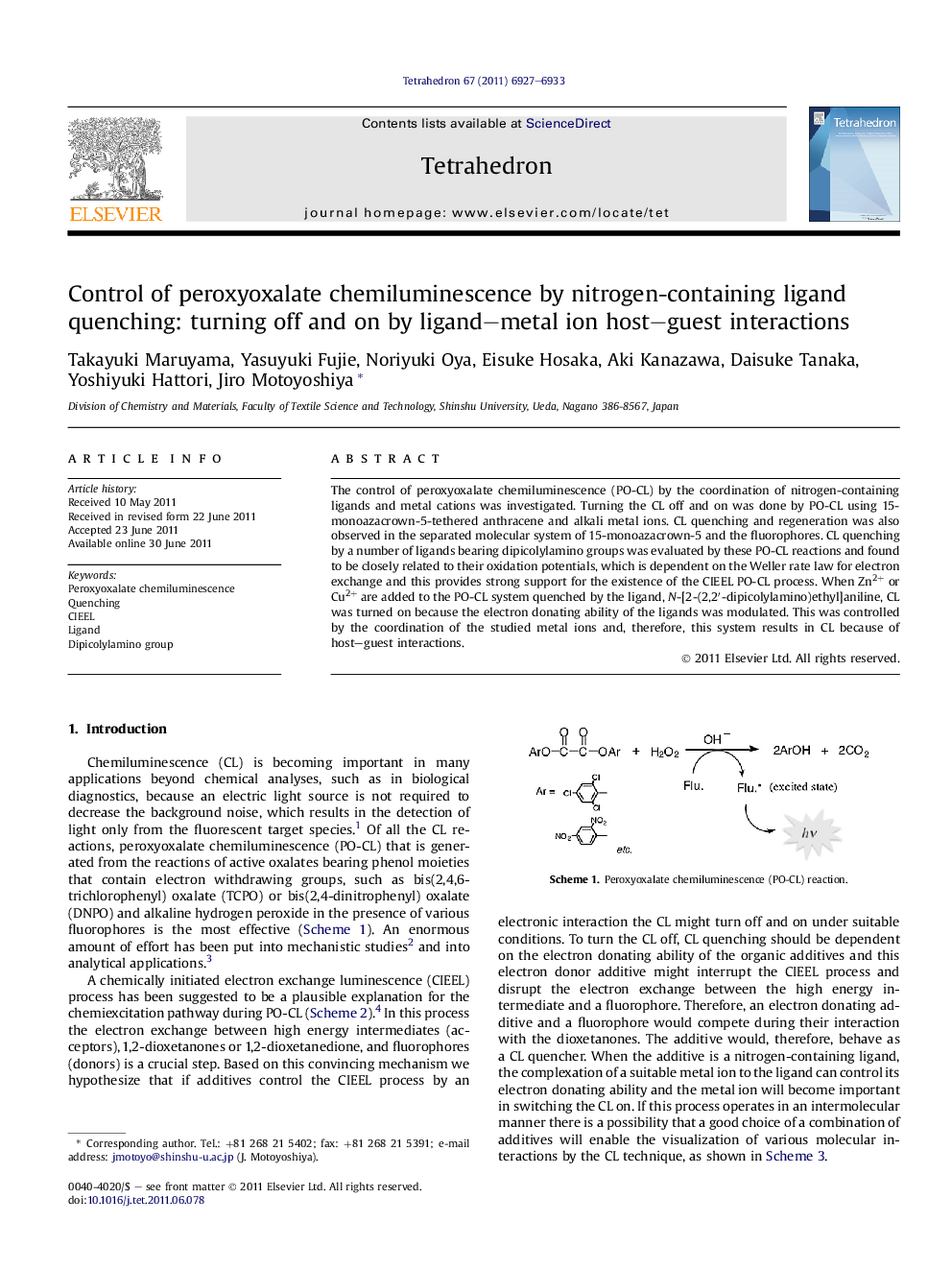| Article ID | Journal | Published Year | Pages | File Type |
|---|---|---|---|---|
| 5221840 | Tetrahedron | 2011 | 7 Pages |
The control of peroxyoxalate chemiluminescence (PO-CL) by the coordination of nitrogen-containing ligands and metal cations was investigated. Turning the CL off and on was done by PO-CL using 15-monoazacrown-5-tethered anthracene and alkali metal ions. CL quenching and regeneration was also observed in the separated molecular system of 15-monoazacrown-5 and the fluorophores. CL quenching by a number of ligands bearing dipicolylamino groups was evaluated by these PO-CL reactions and found to be closely related to their oxidation potentials, which is dependent on the Weller rate law for electron exchange and this provides strong support for the existence of the CIEEL PO-CL process. When Zn2+ or Cu2+ are added to the PO-CL system quenched by the ligand, N-[2-(2,2â²-dipicolylamino)ethyl]aniline, CL was turned on because the electron donating ability of the ligands was modulated. This was controlled by the coordination of the studied metal ions and, therefore, this system results in CL because of host-guest interactions.
Graphical abstractDownload full-size image
